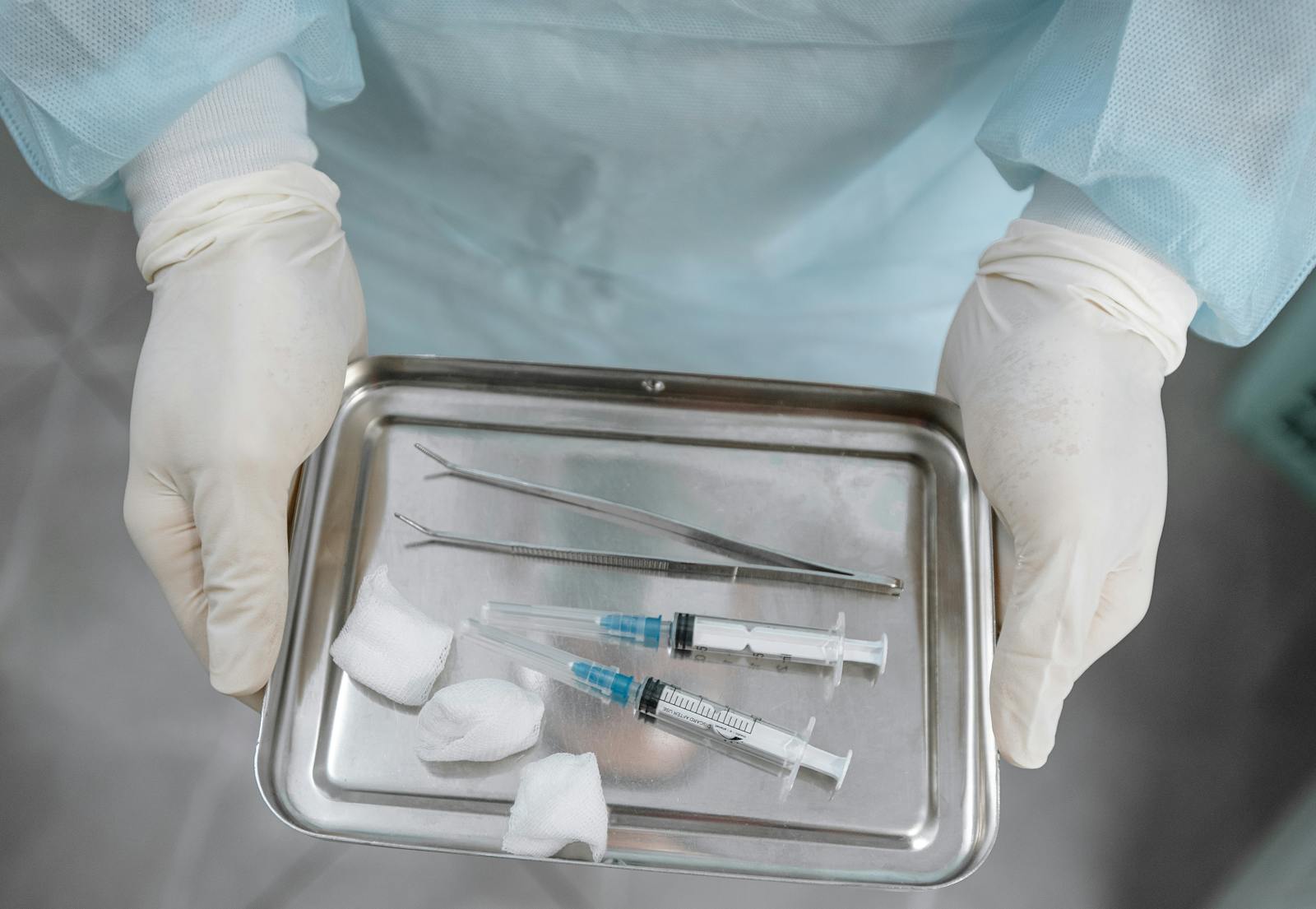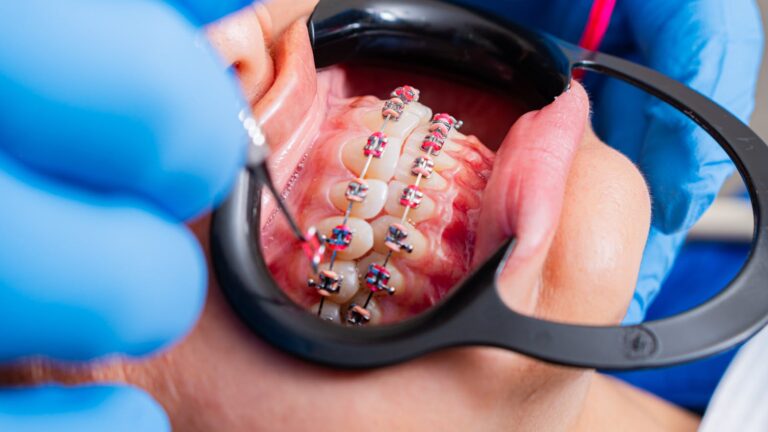How to Stop Wisdom Tooth Bleeding After Surgery
So, you’ve just had your wisdom teeth removed and everything went fine—until you look in the mirror and realize your mouth is still bleeding. Now what?
Postoperative bleeding is completely normal after wisdom tooth extraction, especially in the first few hours. But it can be unsettling if you’re not sure what’s normal and what’s not—or how to stop it safely. In this blog, I’ll walk you through exactly what to expect, how to stop the bleeding, and when to call your dentist.
Why Bleeding Happens After Wisdom Tooth Surgery
Your mouth has a rich blood supply, which is great for healing—but it also means bleeding is likely right after surgery. When a tooth is removed, the space it leaves behind (the socket) needs time to form a **blood clot**. This clot is nature’s way of protecting the area and beginning the healing process.
Sometimes bleeding continues for longer than expected, especially if:
– You’ve been talking too much or opening your mouth frequently
– You’ve been spitting, rinsing, or using a straw
– You’re on medications that thin the blood
– You’ve been lying flat or physically exerting yourself too soon
– The gauze wasn’t applied with enough pressure
Luckily, most cases of bleeding are easily controlled at home with the right steps.
Step-by-Step Guide: How to Stop the Bleeding
If you’re still noticing bleeding a few hours after your extraction, don’t panic—this is fairly common and usually manageable with the right care. Below is a detailed guide to help you stop the bleeding and protect the healing site:
Step 1: Clear the Area—But Gently
If your mouth is filling up with blood and saliva, you might feel the urge to rinse or spit it all out. Resist the urge to rinse forcefully, as that can dislodge the fragile blood clot that’s beginning to form.
Instead:
- If your dentist has given the go-ahead, gently let the fluid dribble out of your mouth into a sink or tissue.
- Avoid swishing water or mouthwash.
- Use a soft, damp cloth or tissue to lightly dab any blood off your lips or chin.
- Then prepare to reapply gauze with clean hands.
Step 2: Use Fresh Gauze and Apply Firm, Consistent Pressure
Take a fresh, sterile piece of gauze (folded into a small square or rectangle) and place it directly over the extraction site. Now, bite down with steady pressure. You want to press firmly enough to help the blood clot form and stabilize—but not so hard that it causes pain.
- Keep biting for at least 30–45 minutes without removing or adjusting the gauze.
- If after that time the gauze is soaked, remove it gently and replace it with a new piece.
- Most bleeding slows or stops within two or three gauze changes.
Step 3: Stay Quiet and Still—No Talking, Chewing, or “Checking”
While the gauze is in place, try to remain still and keep your jaw relaxed. Avoid talking, chewing, or repeatedly opening your mouth to check on the site. Every time you move your jaw or disturb the gauze, you risk interrupting clot formation.
- Find a quiet space to rest.
- Avoid phone calls, conversations, or eating until the bleeding has stopped.
- Use a cool compress on your cheek if you need extra comfort while waiting.
Step 4: Try a Black Tea Bag If Gauze Isn’t Working
If bleeding continues after two or three gauze changes, you can try a moistened black tea bag instead. Black tea contains tannins, which are natural compounds that help constrict blood vessels and promote clotting.
Here’s how:
- Wet a black tea bag with cold water and wring it out slightly.
- Place the tea bag over the bleeding area, just like you would with gauze.
- Bite down gently but firmly for another 30–45 minutes.
This method is often surprisingly effective, especially when standard gauze isn’t enough.
Step 5: Keep Your Head Elevated and Rest
Gravity plays a role in bleeding. If you lie flat, blood may pool near the wound and delay clot formation. To avoid this:
- Sit or recline with your head elevated on pillows.
- Avoid bending over, lying completely flat, or engaging in activities that increase blood pressure in the head.
- Even while sleeping, try to keep your upper body slightly propped up.
Step 6: Avoid Anything That Could Dislodge the Clot
During the first 24–48 hours, it’s essential to protect the blood clot that has formed. That means steering clear of anything that might break the seal or create suction inside your mouth.
Avoid:
- Straws: Sucking can easily pull the clot out.
- Smoking or vaping: These not only cause suction but also introduce harmful chemicals that slow healing.
- Hot beverages or foods: Heat increases blood flow and may cause bleeding to start again.
- Spicy, crunchy, or hard foods: These can irritate or physically disturb the healing site.
Stick to cool, soft, and smooth-textured foods, and take your time eating. You can gradually reintroduce other textures after 3–5 days, once your dentist confirms the site is healing properly.
When Bleeding Is Not Normal
A small amount of bleeding or pink-tinged saliva is completely normal in the first 12 to 24 hours after wisdom tooth extraction. Your body is still adjusting, and it takes time for a solid blood clot to fully stabilize at the surgical site. However, there are times when bleeding goes beyond what’s considered normal—and it’s important to recognize when you need to call your dentist or oral surgeon.
Contact your dental provider right away if you experience any of the following:
- The gauze becomes fully soaked with blood every 30 minutes, even with proper pressure.
This could indicate that the blood clot isn’t forming correctly or that an artery in the area is bleeding persistently. - You notice thick, continuous bleeding or large, jelly-like blood clots.
A healthy clot should stay inside the socket. Seeing excessive clots or steady, dark red bleeding is a sign that the clot is unstable or dislodging. - You feel light-headed, weak, dizzy, or nauseated.
These could be symptoms of excessive blood loss, especially if combined with fast pulse or paleness. - Bleeding that had stopped suddenly starts again 1–2 days later.
This could mean the clot has been disturbed—possibly by eating, brushing, or a sudden change in blood pressure—and the wound is bleeding again. - You are on blood thinners or have a clotting disorder and were not given specific post-op instructions.
These medications affect your body’s ability to form clots. If bleeding seems persistent or abnormal, your medical provider may need to adjust your care plan or prescribe additional measures.
Remember: if something doesn’t feel right, it’s always better to call your dentist. Even a quick phone consultation can give you peace of mind and potentially prevent a small issue from becoming a bigger one.
How to Prevent Bleeding from Coming Back
Stopping the bleeding is only half the battle—keeping it stopped is just as important. A fragile blood clot sits over the socket like a biological bandage, and if it gets disturbed too soon, the bleeding can start all over again. Worse, you risk developing dry socket, which is painful and delays healing.
Here’s how to protect the clot and keep healing on track:
- Stick to soft, soothing foods for the first 3–5 days.
Choose foods like yogurt, mashed potatoes, smoothies (no straws!), applesauce, scrambled eggs, or blended soups. Avoid anything crunchy, spicy, hot, sticky, or acidic. These can irritate the wound or dislodge the clot. - Keep your mouth clean, but gently.
Starting on day 2, you can rinse your mouth gently with warm salt water (½ teaspoon salt in 8 oz of warm water) a few times a day, especially after meals. Don’t swish aggressively or use commercial mouthwashes unless directed by your dentist. - Take it easy for a few days.
Physical exertion—like running, weightlifting, or even vigorous housework—can raise your blood pressure and trigger bleeding. Try to rest, avoid bending over, and give your body time to heal properly. - Hands and tongues off!
It’s tempting to “check on the socket” with your tongue or finger—but please don’t. Prodding, poking, or even nudging the area can loosen the clot and reopen the wound. Trust the process and let your body do its work undisturbed.
Following these precautions not only helps prevent repeat bleeding but also lays the foundation for faster healing, reduced pain, and a lower chance of complications.
Final Thoughts
Bleeding after wisdom tooth removal is a completely normal part of healing—but knowing how to manage it calmly makes a huge difference. In most cases, applying consistent pressure with gauze or a tea bag, staying still, and avoiding suction-based activities will stop the bleeding in no time.
But when in doubt, call your dentist. We’re here to guide you through every step of healing—because peace of mind should always come with your post-op instructions.
Remember: firm pressure, patience, and rest are your best tools.






